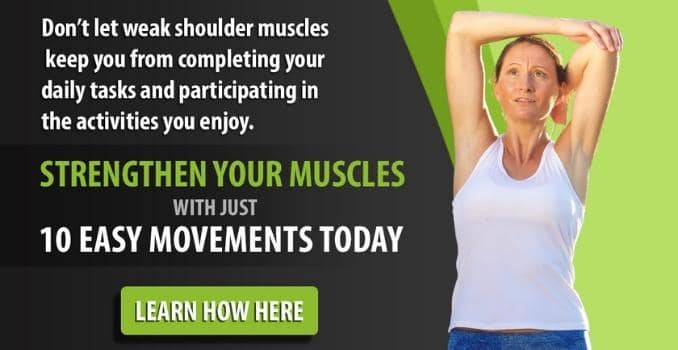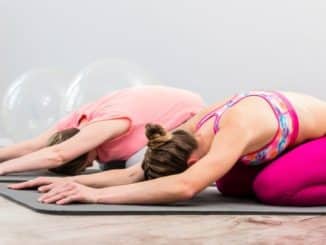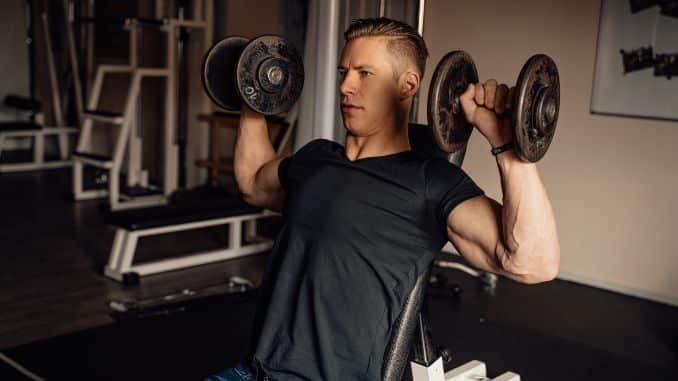
Are you looking to build strong and defined shoulder muscles? Look no further because this shoulder exercises list has got you covered! One highly effective movement to add to your routine is the TYI exercise.
Whether you’re a beginner trying to sculpt your shoulders or an experienced lifter looking to take your gains to the next level, this article will provide you with all the tips and workouts you need.
Developing well-built shoulders enhances your physique and improves your upper body strength and posture.
It’s more important than ever as shoulder pain is becoming increasingly common, disabling around 7% to 26% of the general population in the world, according to experts from Oxford.
In this comprehensive guide, we will walk you through the best exercises and techniques to target all three heads of your shoulder muscles – the anterior (front), medial (side), and posterior (rear) deltoids.
From compound movements like the overhead press and push-ups to isolation exercises like lateral raises and bend-overs, we’ll cover the workouts that yield the best results.
Plus, we’ll share valuable tips to fuel your shoulder muscle growth and promote recovery.
Get ready to unveil those sculpted shoulders you’ve always dreamed of.
Let’s dive in and start building those boulder-like deltoids!
Exercises For Building Shoulder Muscles
Now that you understand the importance of how to build shoulder muscles, let’s explore the ten most effective exercises for building strong and sculpted shoulder muscles.
According to Amy Devaney, the Harvard-affiliated physical therapist of Massachusetts General Hospital, doing these exercises that bolster your shoulder strength is important as it helps with things such as driving, lifting, and doing housework.
1. Wall Push-Up
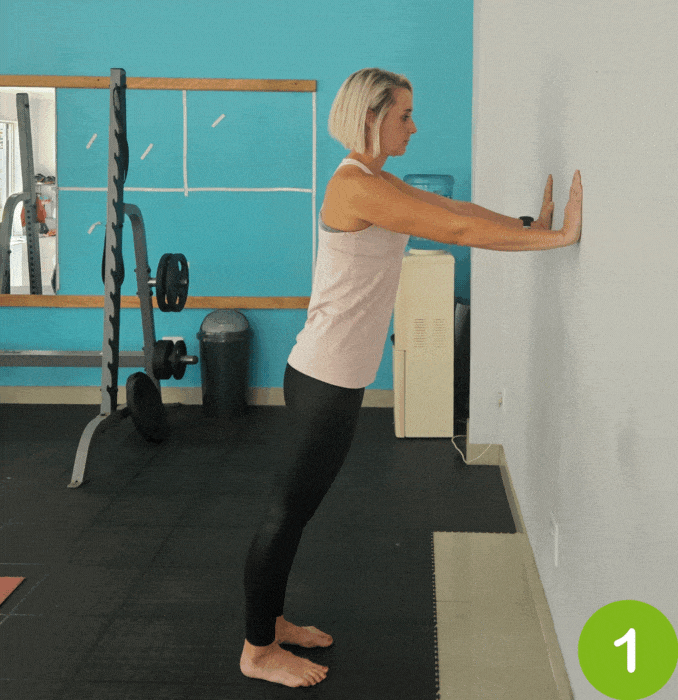
For this exercise, you can use a wall or a post for balance.
- Firstly, begin in an upright standing position in front of the wall with your feet hip-width apart, maintaining good alignment with your head, shoulder, hips, and legs.
- Then, place both hands against the wall at shoulder height and step back with both feet to increase the angle of your body.
- Afterward, engage your core and bend your elbows to lower your upper body towards the wall, keeping your elbows tight to the side.
- Next, straighten your arms to return to the starting position and repeat the movement.
- Lastly, complete 3 sets, 10 repetitions.
2. Chest Press
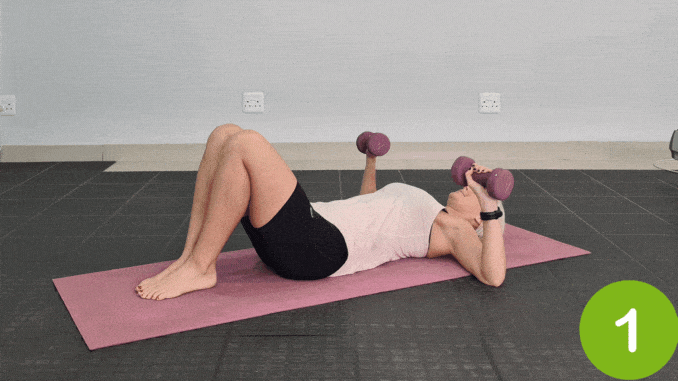
For this exercise, utilize a dumbbell and a yoga mat for comfort.
- Firstly, begin building shoulder muscles by lying on your back on the floor with your knees bent and feet flat on the floor, relaxing your upper body.
- Rest both arms down to the ground, holding dumbbells on each hand.
- Then, engage your core and lift both dumbbells upwards.
- Keep your arms aligned before lowering them back to the starting position.
- Lastly, repeat the movement. Start with 1 set of 10 repetitions.
3. TYI Exercise
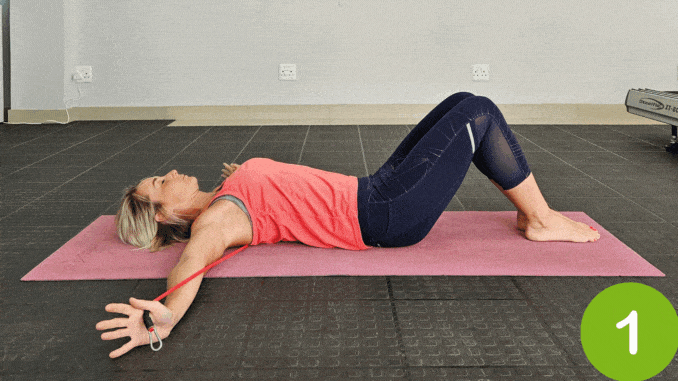
For this exercise, use an exercise band and a yoga mat for comfort.
- Begin the TYI Exercise by lying on your back with your knees bent and feet flat on the floor, relaxing your upper body.
- Wrap the resistance band around your back while holding both ends of the exercise band on each hand.
- Engage your core and lift your arms sideways in good alignment with your shoulders in a “T” position.
- Slowly move your arms up, creating a “Y” position.
- Then, move your arms closer to your ears, creating an “I” position. Hold each position for a few seconds while creating resistance to the band with each position.
- Lower your arms to return to the starting position.
- Lastly, repeat the sequence of movements.
You can also do this exercise while in a standing or sitting position.
4. Bicep Curls To Shoulder Press

For this exercise, utilize a dumbbell or a can of soup.
- Begin this How to Build Shoulder Muscles in an upright standing position with your feet hip-width apart, maintaining good alignment with your head, shoulders, hips, and legs.
- Hold a dumbbell with the same weight on each hand with both palms facing outward.
- Engage your core and bend your arms to bring the dumbbells to shoulder height.
- Then, spread the arms with a slight bend outwards.
- Lastly, lift both dumbbells upward.
- Hold that position for a few seconds.
- Then, lower your arms to the starting position and repeat the movement.
- Start with 1 set of 10 repetitions.
5. Lateral Arm Raise
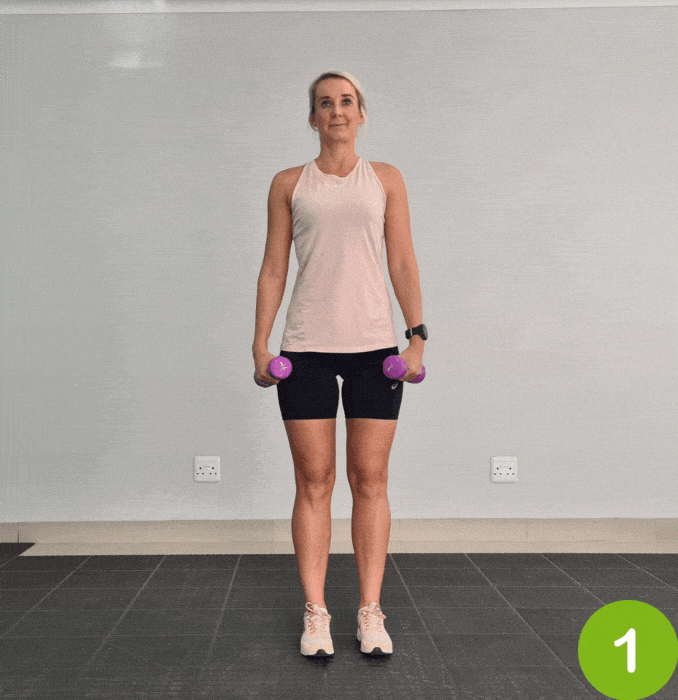
You can use a dumbbell for this exercise for extra weight.
- Firstly, begin in an upright standing position with your feet shoulder-width apart, maintaining good alignment with your head, shoulders, hips, and legs.
- Then, place your hands at your side while holding weights or dumbbells.
- Engage your core, then lift both arms to the sides at shoulder height.
- Lastly, gently flap your arms in a slow and controlled manner.
- Start with 3 sets of 10 repetitions.
6. Reach And Pull
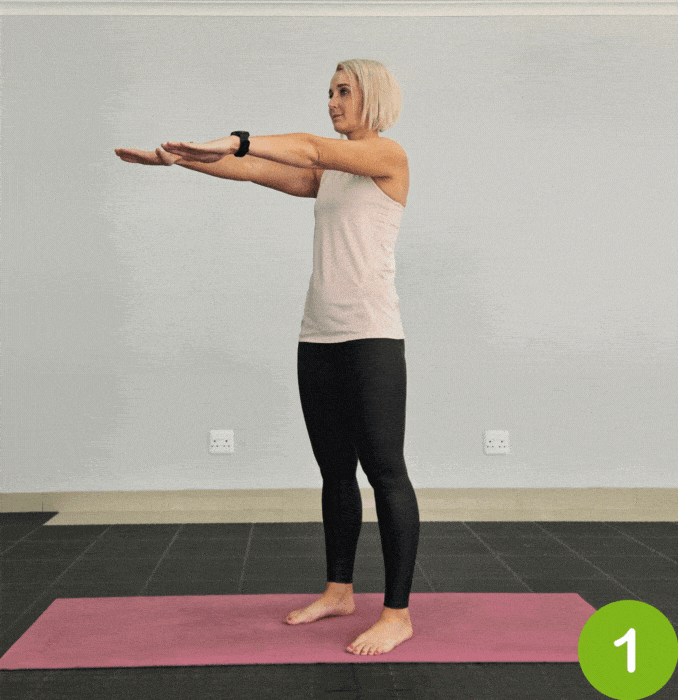
- Begin in an upright standing position with your feet shoulder-width apart, maintaining good alignment with your head, shoulders, hips, and legs.
- Engage your core.
- Extend both arms in front of your body at shoulder height.
- Pull your arms back, keeping your elbows in line with your shoulders and squeezing your shoulder blades together at the end position.
- Lastly, return to the starting position and repeat the movement.
7. Shoulder Rolls
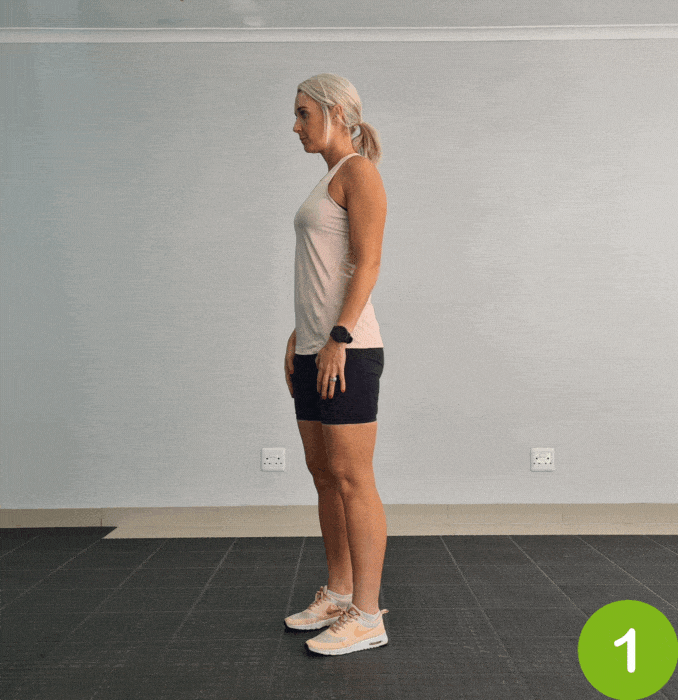
- Begin How to Build Shoulder Muscles in an upright standing position with your feet hip-width apart, maintaining a good alignment with your head, shoulders, hips, and legs.
- Relax your arms at your sides and engage your core.
- Lift your shoulders, then roll them back until you feel resistance in your shoulder blades.
- Lower your shoulders to the starting position and repeat the movement.
- Relax, then repeat the movement in the opposite direction.
- Complete the movement for 5 repetitions for each motion.
The Importance Of Shoulder Muscles In Overall Fitness

The shoulder is a complex joint that consists of several muscles (Precerutti et al. 2010), but the three main muscles, anterior (front), medial (side), and posterior (rear) deltoids, are what we’ll be focusing on.
The anterior deltoid is responsible for shoulder flexion [1], raising your arms in front of you (Chang et al., 2023).
Well-developed shoulder muscles are essential for aesthetic purposes and play a crucial role in overall fitness.
Strong shoulder muscles improve posture, upper body strength, and stability.
They also enhance performance in various sports and activities, such as lifting, throwing, and pushing.
Neglecting shoulder muscle development can lead to muscle imbalances, resulting in poor posture, limited range of motion, and increased risk of injuries.
Therefore, it’s important to include shoulder exercises in your workout routine to maintain a well-rounded and functional physique by building muscles.
Tips For Building Shoulder Muscles Safely And Effectively
When building shoulder muscles, it’s important to prioritize safety and effectiveness.
Here are some tips to help you achieve your goals while minimizing the risk of injury:
1. Perform Warm-Ups

Before starting any shoulder workout, warm-up exercises are essential for preparing your shoulders and entire body.
Incorporate movements that target shoulder mobility, such as arm circles, shoulder rolls, arm swings, and shoulder dislocations.
Additionally, include dynamic stretches that target the muscles around the shoulder joint [2], such as shoulder flexion and extension, internal and external rotation, and scapular mobility exercises.
These exercises help increase blood flow, loosen tight muscles, and improve joint range of motion, reducing the risk of injury during workouts.
2. Start With Light Weights

Beginners or individuals returning to shoulder exercises after a break should begin with light weights to allow their muscles, tendons, and ligaments to adapt gradually as they learn how to build shoulder muscles effectively.
Start with weights that allow you to perform exercises with proper form and technique without compromising joint stability.
Focus on mastering the movement patterns and engaging the correct muscles before progressing to heavier weights.
Gradually increase the weight as you become more comfortable and confident with the exercises, ensuring that you maintain control throughout the entire range of motion.
3. Focus On Proper Form
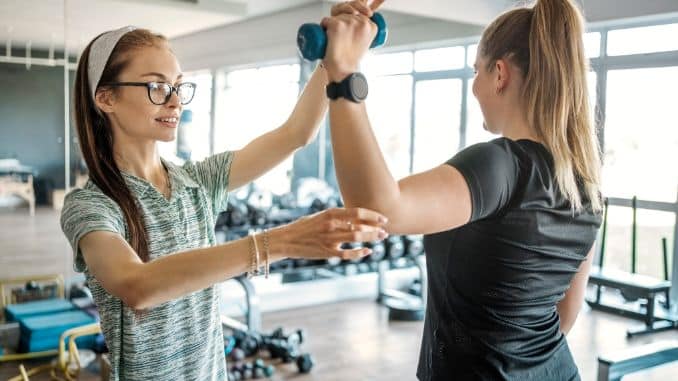
Proper form is critical for targeting and build shoulder muscles effectively and minimizing the risk of injury. When performing shoulder exercises, pay close attention to your posture, alignment, and movement mechanics.
Maintain a neutral spine position and avoid shrugging your shoulders or hunching forward, which can place unnecessary strain on the shoulders and increase the risk of injury.
If you’re unsure about proper form, consider working with a qualified fitness trainer to ensure you’re performing exercises correctly.
4. Gradually Increase Intensity

Progressive overload is key for stimulating muscle growth and strength gains in the shoulders.
As you become stronger and more experienced, gradually increase the intensity of your workouts by progressively overloading the muscles.
This can involve increasing the weight you lift, performing more repetitions or sets, or incorporating advanced variations of exercises.
However, it’s essential to progress gradually and avoid sudden jumps in intensity, as this can increase the risk of overuse injuries or muscle strains.
5. Allow For Sufficient Recovery
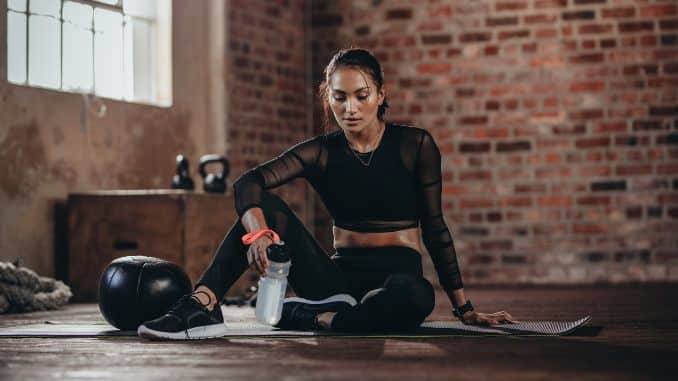
Rest and recovery are crucial for muscle growth and shoulder pain, especially in the rotator cuff muscles.
Listen to your body and avoid overtraining.
Include rest days in your workout schedule and prioritize sleep and proper nutrition for optimal recovery.
Excessive exercise without adequate rest can lead to fatigue, decreased performance, and an increased risk of injury.
Prioritize quality sleep, proper nutrition, and hydration to support optimal recovery and muscle repair.
Additionally, consider incorporating techniques such as foam rolling, stretching, and massage to help alleviate muscle tension and improve recovery between workouts.
Conclusion
Building strong and sculpted muscles [3] through shoulder exercises not only enhances your physique but also improves your overall upper body strength, stability, and posture.
By targeting the anterior, medial, and posterior deltoids with a combination of compound and isolation exercises, including the TYI exercise for enhanced shoulder activation, you can achieve well-rounded shoulder muscle development.
Remember to prioritize safety by warming up, starting with light weights, focusing on proper form, gradually increasing intensity, and allowing for sufficient recovery.
Combine your workouts with a well-balanced diet that provides adequate protein and nutrients to fuel muscle growth and promote recovery.
With dedication, consistency, and the right exercises and nutrition, you can unlock the secrets of power shoulders and achieve the sculpted deltoids you’ve always dreamed of.
So, get ready to hit the gym, follow these tips, and build those boulder-like shoulders!
Transform your shoulders with our comprehensive guide, filled with pro tips, workouts, and nutrition advice. Don’t miss our ‘10 Easy Movements for Stronger Shoulders‘ to get you started. Begin your shoulder-sculpting journey now!
FAQ
Why are shoulder muscles important in overall fitness?
Strong shoulder muscles not only enhance your upper body appearance but also improve strength, stability, and posture.
They play a crucial role in various activities, including lifting, throwing, and pushing, and help prevent muscle imbalances that can lead to poor posture and injuries.
What are the three main muscles of the shoulder, and why should I target them all?
Targeting all three ensures balanced development, which improves aesthetics and helps prevent injuries by supporting joint stability and mobility.
The shoulder consists of three main muscle heads: the anterior (front), medial (side), and posterior (rear) deltoids.
How should I warm up before doing shoulder exercises?
A warm-up is essential for preventing injuries.
You can perform dynamic stretches and mobility exercises such as arm circles, shoulder rolls, and arm swings to increase blood flow and prepare the shoulder joints for the workout.
Should I start with heavy weights to build shoulder muscles faster?
No, it’s best to start with light weights, especially if you’re a beginner.
Focus on proper form and gradually increase the weight as your muscles become stronger.
This helps to avoid injuries and ensures that you’re targeting the correct muscles effectively.
How often should I increase the intensity of my shoulder workouts?
You should progressively overload your muscles by gradually increasing the intensity as you get stronger.
This can be done by adding more weight, increasing repetitions, or incorporating advanced variations.
However, be careful to avoid sudden jumps in intensity, as this can lead to overuse injuries.
What should I eat to support shoulder muscle growth?
A diet rich in protein, healthy fats, and complex carbohydrates will support muscle growth and recovery.
Protein is especially important for muscle repair, so include sources like lean meats, fish, eggs, legumes, and dairy in your meals.
How important is recovery after shoulder workouts?
Recovery is crucial for muscle growth and preventing injuries.
Allow sufficient rest days, prioritize sleep, and stay hydrated.
Techniques like foam rolling, stretching, and massages can also help alleviate muscle tension and improve recovery.
Can I perform shoulder exercises if I experience shoulder pain?
If you have existing shoulder pain, consult with a medical professional or physical therapist before starting shoulder exercises.
Focus on gentle, pain-free movements and avoid exercises that strain the shoulder.
Proper form and avoiding excessive weight are essential to preventing further injury.
How can I ensure proper form during shoulder exercises?
Proper form is vital for safety and effectiveness.
Keep your shoulders down and back, engage your core, and avoid arching your back.
Maintaining alignment and controlling your movements will help you target the shoulder muscles correctly.

